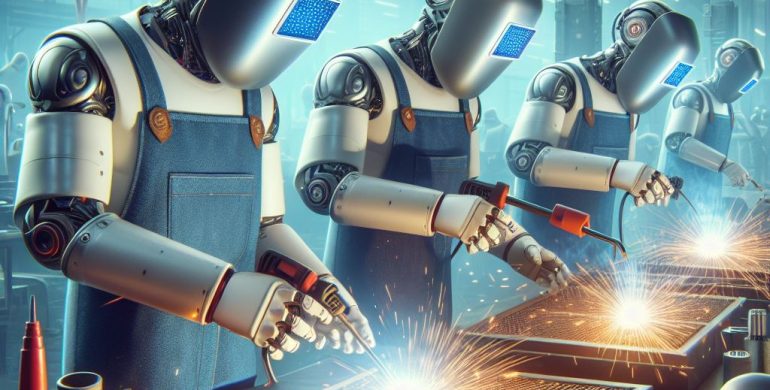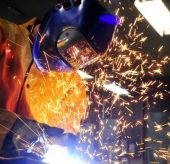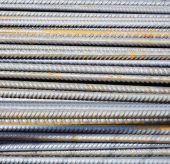Robotics in Welding
The Role of Automation
Sacramento Sparks Reno Welding Supply
The Role of Automation and Robotics in Welding
The welding industry is undergoing a transformative phase, with automation and robotics playing pivotal roles in advancing efficiency, enhancing quality, and mitigating labor shortages. This integration of technology is not just a leap towards modernization; it’s a necessary evolution to meet the increasing demands of industries reliant on welding, such as automotive, aerospace, construction, and manufacturing.
Welding, traditionally seen as a labor-intensive task requiring high levels of skill and experience, faces challenges such as the physical strain on workers, consistency in quality, and a widening skills gap due to an aging workforce. However, the advent of robotic welding arms and automated systems is reshaping the landscape. These technologies offer precision and repeatability unmatched by human capabilities, ensuring that every weld is of the highest quality, thereby reducing waste and increasing productivity.
Automation in welding takes various forms, from fully automated robotic systems that can independently perform complex welding tasks to semi-automated systems where robots handle the welding while humans perform the setup and monitoring. This flexibility allows for tailored solutions that can be integrated into existing workflows, making automation accessible for businesses of all sizes.
One of the most significant advantages of integrating robotics into welding is the potential to address labor shortages. With the welding industry facing a gap between retiring skilled workers and the entry of new talent, robots offer a way to maintain production levels without the need for large numbers of skilled welders. Furthermore, automation can attract a younger workforce by shifting the nature of welding jobs from physically demanding tasks to more technologically oriented roles, focusing on programming, operation, and maintenance of robotic systems.
Moreover, robotic welding systems are increasingly equipped with advanced sensors and machine learning capabilities, allowing for real-time adjustments during the welding process. This adaptability not only enhances the quality of the welds but also extends the capabilities of welding processes to handle a wider range of materials and complex geometries.
The integration of automation and robotics into welding is not just an incremental improvement but a necessary evolution. By enhancing efficiency, ensuring consistent quality, and offering solutions to labor shortages, robotic welding is set to redefine the industry, making it more sustainable and ready to meet the challenges of the future.





